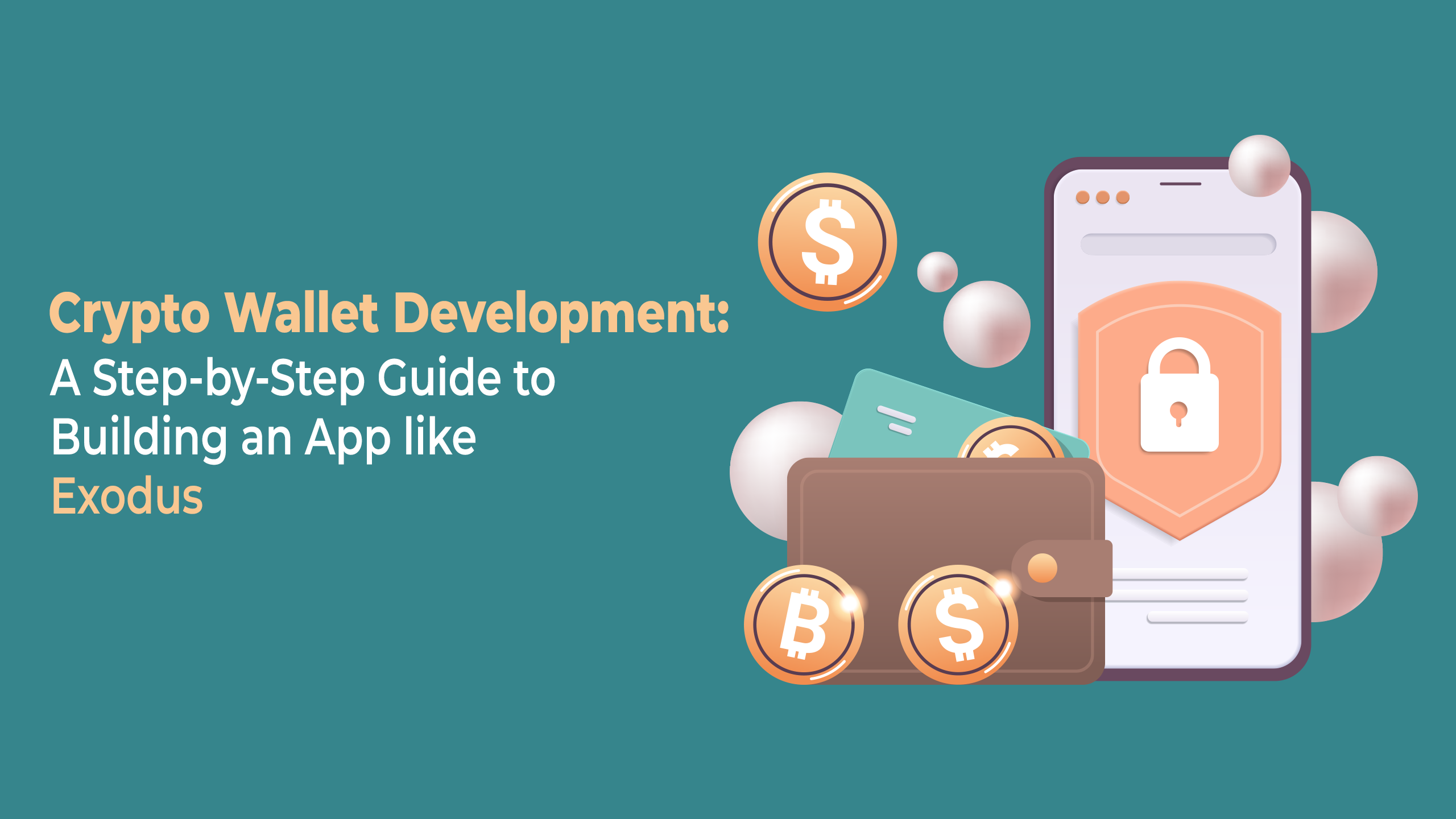Cryptocurrencies have gained significant popularity in recent years, and the need for secure and user-friendly cryptocurrency wallets has grown exponentially. Exodus is one such renowned cryptocurrency wallet that offers a seamless experience for managing various cryptocurrencies. If you’re interested in developing a similar app, this step-by-step guide will walk you through the essential aspects of building a crypto wallet like Exodus.
A Step-by-Step Guide to Build Crypto Wallet Development
Step 1: Define Your Objectives and Target Audience
Before diving into the development process, clearly define your objectives for creating a crypto wallet app. Determine the target audience you want to cater to, such as beginner cryptocurrency users, experienced traders, or a specific niche market. Understanding your objectives and target audience will help you make informed decisions throughout the development journey.
Step 2: Choose the Platform and Technology Stack
Decide whether you want to develop a mobile wallet app for iOS, Android, or both platforms. Consider the pros and cons of each platform, such as user base, development cost, and time to market. Select a technology stack that aligns with your chosen platform, ensuring it provides the necessary security features and supports the cryptocurrencies you intend to include in your wallet.
Step 3: Focus on Security
Security is of paramount importance when it comes to crypto wallets. Implement robust security measures to protect user funds and sensitive information. Consider incorporating features like two-factor authentication (2FA), biometric authentication (fingerprint or face recognition), encryption, and secure key storage. Conduct regular security audits to identify and address any vulnerabilities.
Step 4: Design an Intuitive User Interface
Creating a user-friendly and intuitive interface is crucial for attracting and retaining users. Invest in a visually appealing design that aligns with your target audience’s preferences. Ensure the app’s navigation is simple and intuitive, making it easy for users to perform actions like sending and receiving cryptocurrencies, checking balances, and viewing transaction history.
Step 5: Implement Multi-Currency Support
To cater to a wide range of cryptocurrency users, offer support for multiple cryptocurrencies. Research and integrate the most popular and widely used cryptocurrencies, such as Bitcoin (BTC), Ethereum (ETH), Ripple (XRP), and Litecoin (LTC). Ensure seamless integration with the respective blockchain networks to provide real-time updates on balances and transactions.
Step 6: Enable Two-Way Exchange Functionality
Consider incorporating an integrated exchange feature within your crypto wallet app. This allows users to convert one cryptocurrency to another directly within the app, eliminating the need for third-party exchanges. Partner with reliable and secure exchanges to ensure smooth and transparent transactions for your users.
Step 7: Integrate Portfolio Tracking and Analytics
Enhance the user experience by providing portfolio tracking and analytics features. Users should be able to view their overall cryptocurrency holdings, monitor the performance of their investments, and access detailed analytics such as price charts, historical data, and market trends. These features empower users to make informed decisions about their cryptocurrency investments.
Step 8: Ensure Regulatory Compliance
Comply with the relevant regulations and legal requirements in the jurisdictions you plan to operate. Implement know-your-customer (KYC) and anti-money laundering (AML) procedures to prevent illicit activities. Partner with reputable payment processors to enable fiat currency transactions while adhering to regulatory guidelines.
Step 9: Beta Testing and User Feedback
Once your app is developed, conduct rigorous beta testing to identify and fix any bugs or usability issues. Invite a selected group of users to test the app and gather valuable feedback to improve its performance, usability, and overall user experience. Implement the necessary enhancements based on user feedback before launching the app to the wider audience.
Step 10: Launch, Market, and Iterate
With a stable and refined product, it’s time to launch your crypto wallet app. Develop a comprehensive marketing strategy to create awareness and attract users. Leverage social media platforms, cryptocurrency communities, and partnerships to reach your target audience. Continuously gather user feedback and data post-launch to make iterative improvements and enhance the app’s functionality.
Conclusion:
Building a cryptocurrency wallet app like Exodus requires meticulous planning, attention to security, and a user-centric approach. By following the step-by-step guide outlined above, you’ll be well on your way to developing a feature-rich and secure crypto wallet app that meets the needs of your target audience. Remember to prioritize user experience, security, and regulatory compliance throughout the development process, and be prepared to iterate and improve based on user feedback and market demands.




